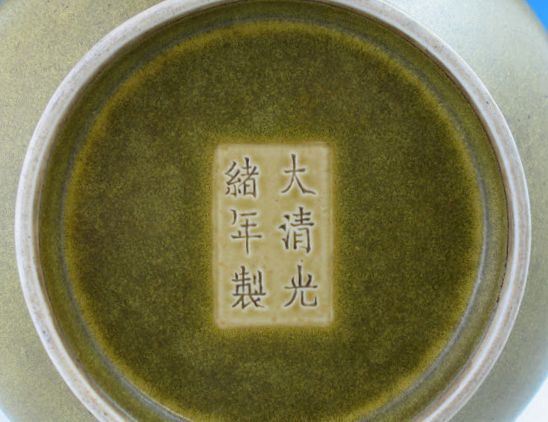
Base and foot rim on a Guangxu mark and period (1875-1908) teadust glazed vase.
An olive colored glaze, high-fired green speckled glaze. A 'tea dust' glaze first occurred at kilns in Shaanxi and Henan during the Tang dynasty. Teadust glazes were used on a multitude of pottery even in the Ming dynasty and on provincial wares during the Qing as well. In the Yongzheng period during the Qing dynasty 'tea dust' glaze was revived and developed in Jingdezhen for use on Imperial wares, probably in an imitation of bronze.
It appears as if the tea dust effect results from an iron rich glaze being allowed to cool down slowly, which leads to iron - 'oil' - spots poling on the surface.
A similar glaze is the iron rust glaze that seems to be created in a similar way, but is maybe just fired up to a slightly higher temperature, before it is allowed to cool down slowly.
See also: Chayemo
A